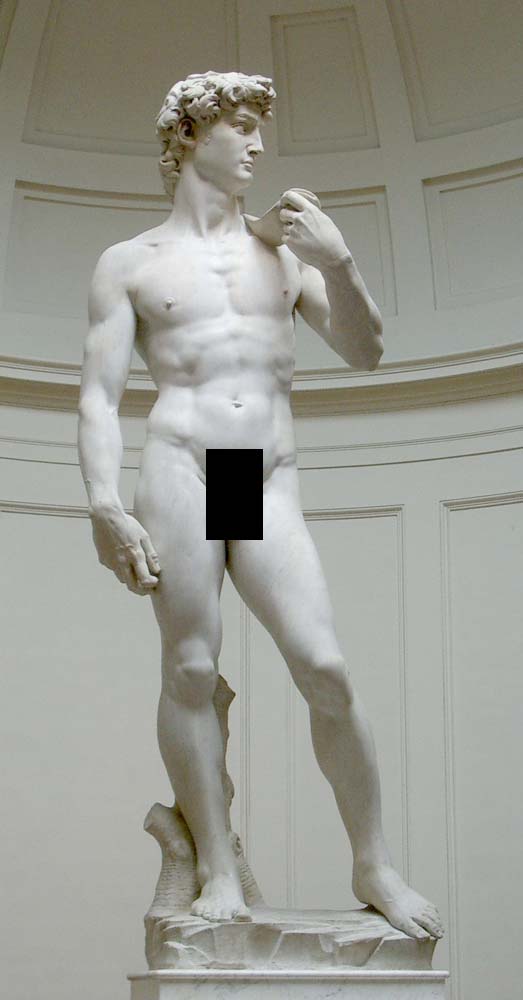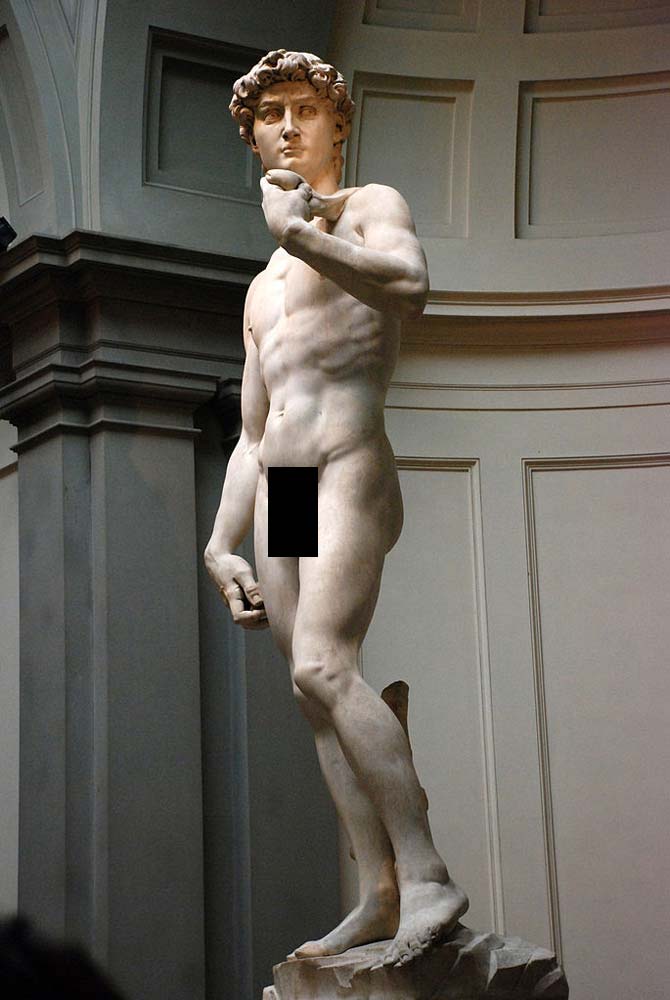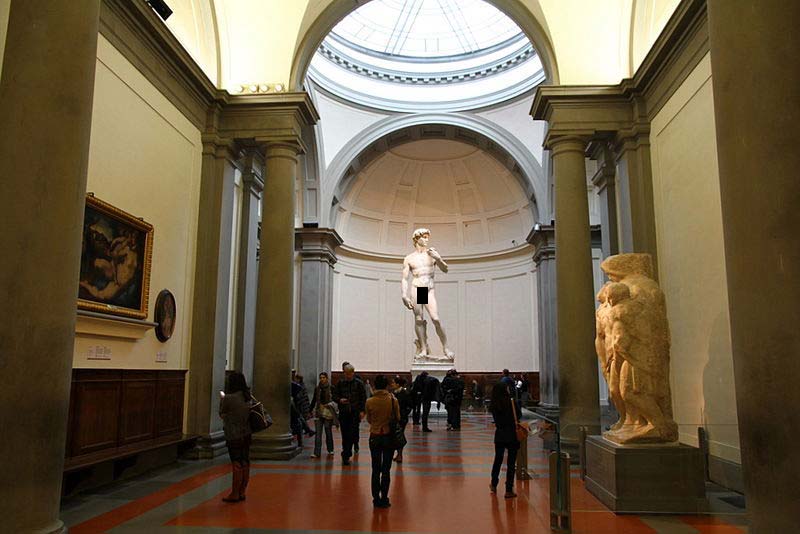| David | |
|---|---|
 |
|
| Artist | Michelangelo |
| Year | 1501–1504 |
| Medium | Carrara marble |
| Location | Galleria dell’Accademia, Florence |
| Height | 517 cm (203.5 in) |
David is one of the most exquisite Renaissance sculptures made during the early 1500s. This famous work of art was created by Michelangelo, a famous Italian artist. The statue measures 5.17 meters tall, and it is a marble figure of the biblical hero named David. This young man was also the most common subject in Renaissance art, particularly in Florence.
Highlights
The sculpture was originally intended as among the statues of prophets that were positioned at the roofline of the eastern section of the Florence. Furthermore, it was placed in the public square at Palazzo della Signoria, which was the center of Florence’s civic government. Because of the courageous nature of this biblical hero, it eventually became the symbol of defense of the civil liberties depicted in the Florentine Republic.
The artwork is much different from the previous statues made by other famous artists such as Verrocchio and Donatello. David by Michelangelo depicted the young David before he went on to his battle with the mighty Goliath. Hence, the figure’s face appeared tense and set for combat instead of victorious because of his foe’s defeat.
Features
 Michelangelo’s artwork is his interpretation of the typical Ancient Greek theme of a heroic biblical figure. It features the contrapposto pose, which is a distinctive aspect of antique sculptures. The brave David stands in a tense manner, with one leg relaxed while the other holds its total body weight. Hence, this causes his shoulders and hips to rest at an opposite angle. Moreover, David’s head turns towards his left, and he is carrying a sling at his back. With all these features, many people regard the sculpture as a symbol of youthful beauty and human strength.
Michelangelo’s artwork is his interpretation of the typical Ancient Greek theme of a heroic biblical figure. It features the contrapposto pose, which is a distinctive aspect of antique sculptures. The brave David stands in a tense manner, with one leg relaxed while the other holds its total body weight. Hence, this causes his shoulders and hips to rest at an opposite angle. Moreover, David’s head turns towards his left, and he is carrying a sling at his back. With all these features, many people regard the sculpture as a symbol of youthful beauty and human strength.
The statue is also quite large, as compared to the artist’s contemporaries during that era. In fact, most art scholars consider the statue as miraculous, as Michelangelo was able to bring back to life a renowned figure who was already dead. Although there were numerous colossal statues ever created in history, David by Michelangelo has remained as one of the finest and most impressive.
It is also important to note that some of the features of this statue seemed quite large, particularly the hands and head. However, the artist did this on purpose since the statue was intended to be positioned on the roofline of the cathedral. Thus, he needed to find a way to accentuate certain parts that would make them visible when viewed from below.
Additional Details
 This figure appears rather slender from the front to back when compared to its height. According to scholars, this may be caused by the work done on the block even before the artist started carving it. In addition, the statue was regarded as a political image prior to his decision to work on it.
This figure appears rather slender from the front to back when compared to its height. According to scholars, this may be caused by the work done on the block even before the artist started carving it. In addition, the statue was regarded as a political image prior to his decision to work on it.
Evidently, David has long been the preferred political image throughout Florence, as several artworks that featured the biblical hero were commissioned in most of the significant locations in the city.
Conservation and Preservation
In 1991, the statue’s foot was badly damaged when a deranged man smashed it with a hammer. Based on the collected samples from that incident, scientists were able to discover that the marble was obtained from Miseglia’s Fantiscritti quarries, which was in one of Carrara’s small valleys. With the degradation of the marble, the statue has undergone its very first major cleaning, from 2003 to 2004. Four years after, there were plans to insulate the sculpture from the vibration caused by the tourists’ footsteps, in order to prevent further and more severe damages of the marble.
Several reproductions of the statue has been made throughout the years. For instance, the plaster cast of this biblical hero is currently displayed at the Victoria and Albert Museum. However, this statue has a plaster fig leaf, which was created when Queen Victoria was shocked about the statue’s nudity. The plaster fig leaf is hung on the figure using two hooks, prior to any royal visits.
In the 20th century, the sculpture has become an iconic term for the city’s culture. The statue has also been reproduced frequently such as in imitation marble fiberglass and plaster, which symbolized an ambience of refinement and culture in various settings such as model railroads, gambling casinos and beach resorts. Thus, the artwork is indeed the finest in history because of its grand size, interesting details and features.